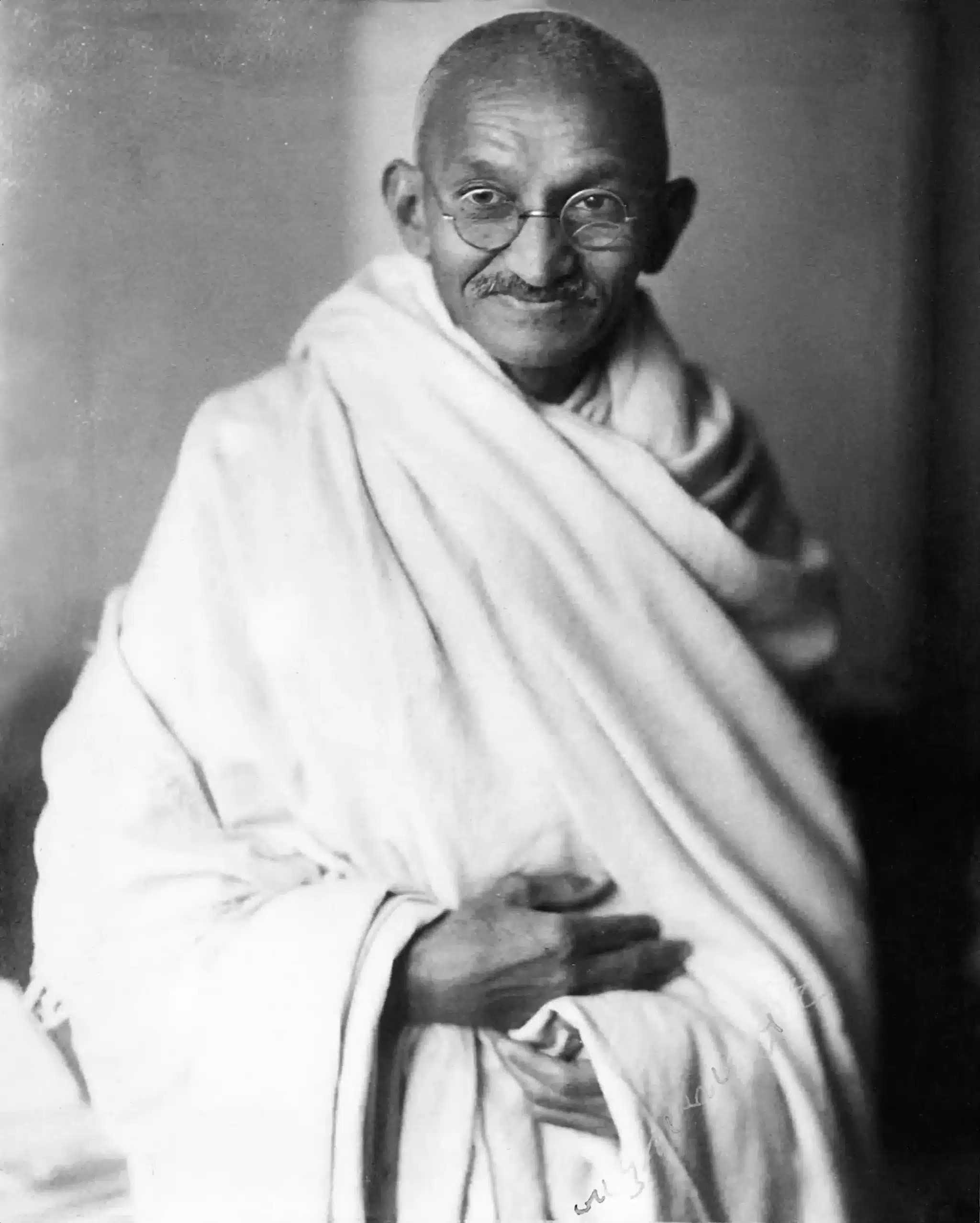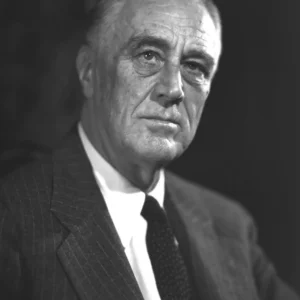Mahatma Gandhi, born Mohandas Karamchand Gandhi on October 2, 1869, in Porbandar, India, is revered worldwide as the Father of Indian Independence. His philosophy of nonviolent resistance, or Satyagraha, played a pivotal role in India’s struggle for freedom from British colonial rule. Gandhi’s unwavering commitment to peace, justice, and equality inspired movements for civil rights and freedom across the globe. This article delves into his life, contributions, and enduring legacy.
Early Life and Family
Birth and Background
Gandhi was born into a Hindu family in coastal Gujarat. His father, Karamchand Gandhi, served as the dewan (chief minister) of Porbandar and other states in the Kathiawar Agency, while his mother, Putlibai, was a deeply religious woman who instilled in Gandhi a strong sense of spirituality and morality. The values of truth, nonviolence, and compassion that Gandhi learned from his mother would later become the cornerstones of his philosophy.
Education and Early Influences
Gandhi received his early education in Porbandar and later attended Samaldas College in Bhavnagar. In 1888, at the age of 18, he traveled to London to study law at the Inner Temple. His time in London exposed him to various religious and philosophical ideas, including those of Leo Tolstoy, John Ruskin, and Henry David Thoreau, which significantly influenced his views on nonviolence and civil disobedience. Gandhi was called to the bar in 1891 and returned to India to begin his legal practice.
Life in South Africa
Arrival and Early Struggles
In 1893, Gandhi accepted a one-year contract to work as a lawyer in South Africa, a decision that would shape the rest of his life. Upon arriving in South Africa, he faced blatant racial discrimination and injustice, experiences that galvanized his resolve to fight for the rights of Indian immigrants. Gandhi’s philosophy of Satyagraha, or truth-force, emerged during this period as he organized nonviolent protests and campaigns against discriminatory laws.
Formation of Satyagraha
Gandhi’s commitment to nonviolence was put to the test during his 21 years in South Africa. He led successful campaigns against oppressive measures such as the Black Act, which required all Indians to carry identification passes. Gandhi’s approach combined passive resistance with active civil disobedience, emphasizing the moral high ground and appealing to the conscience of the oppressor. His efforts garnered international attention and laid the foundation for his future leadership in India.
Return to India and Political Ascendancy
Rejoining the Indian National Congress
In 1915, Gandhi returned to India and quickly became involved in the Indian independence movement. He joined the Indian National Congress (INC) and began organizing peasants, farmers, and urban laborers to protest against British colonial rule. Gandhi’s emphasis on nonviolence and self-reliance resonated with the masses, earning him widespread support and respect.
Champaran and Kheda Campaigns
Gandhi’s first major success in India came with the Champaran and Kheda campaigns in 1917-1918. In Champaran, Bihar, he led a movement to address the grievances of indigo farmers who were forced to cultivate indigo under oppressive conditions. Gandhi’s efforts resulted in significant concessions from the British authorities. Similarly, in Kheda, Gujarat, he supported farmers facing crop failure and heavy taxation, leading to the suspension of revenue collection. These early victories established Gandhi as a formidable leader and champion of the oppressed.
The Non-Cooperation Movement
Launch and Objectives
In 1920, Gandhi launched the Non-Cooperation Movement, calling for a boycott of British institutions and goods. He urged Indians to withdraw from government jobs, schools, and courts, and to use Swadeshi (self-produced) goods instead. The movement aimed to weaken British authority and promote self-reliance among Indians.
Mass Mobilization and Repression
The Non-Cooperation Movement saw unprecedented mass mobilization, with millions of Indians participating in protests, strikes, and acts of civil disobedience. However, the movement also faced severe repression from the British authorities, resulting in the arrest of thousands of activists, including Gandhi himself. Despite these challenges, the movement marked a significant step towards Indian independence by demonstrating the power of nonviolent resistance.
The Salt March and Civil Disobedience Movement
The Salt March
In 1930, Gandhi launched one of his most famous campaigns, the Salt March, to protest against the British monopoly on salt production and taxation. Gandhi and his followers marched 240 miles from Sabarmati Ashram to the Arabian Sea, where they made salt by evaporating seawater. This act of defiance sparked widespread civil disobedience across India and drew global attention to the Indian independence movement.
The Civil Disobedience Movement
Following the Salt March, Gandhi expanded the Civil Disobedience Movement, encouraging Indians to refuse to pay taxes, boycott British goods, and defy colonial laws. The movement led to widespread arrests and violent reprisals by the British, but it also demonstrated the resilience and determination of the Indian people. Gandhi’s leadership during this period solidified his status as the face of the Indian independence struggle.
The Quit India Movement
Call for Immediate Independence
During World War II, Gandhi intensified his efforts to achieve independence through the Quit India Movement, launched in 1942. He called for immediate British withdrawal from India and encouraged Indians to engage in widespread civil disobedience. The slogan “Do or Die” became synonymous with the movement, reflecting Gandhi’s unwavering resolve.
Repression and Imprisonment
The Quit India Movement faced brutal repression from the British authorities, who arrested thousands of leaders, including Gandhi. Despite the setbacks, the movement galvanized public support for independence and heightened international awareness of India’s plight. Gandhi’s imprisonment further fueled the resolve of his followers to achieve freedom.
Advocacy for Social Reforms
Eradication of Untouchability
In addition to his political activism, Gandhi was deeply committed to social reform. He campaigned tirelessly for the eradication of untouchability, advocating for the rights and dignity of the Dalit community. He coined the term “Harijan” (children of God) to refer to Dalits and worked to integrate them into mainstream society.
Women’s Rights and Rural Development
Gandhi also championed women’s rights, encouraging their participation in the independence movement and advocating for gender equality. He promoted rural development and self-sufficiency through initiatives such as spinning khadi (hand-spun cloth) and establishing village industries. Gandhi’s vision of an egalitarian society extended beyond political independence to encompass social and economic justice.
Assassination and Legacy
Final Years and Assassination
After India gained independence in 1947, Gandhi focused on fostering unity and reconciliation between Hindus and Muslims. However, his efforts were cut short when he was assassinated on January 30, 1948, by Nathuram Godse, a Hindu nationalist who opposed Gandhi’s policies of tolerance and nonviolence. Gandhi’s death was a profound loss for India and the world.
Enduring Impact
Mahatma Gandhi’s philosophy of nonviolence and his dedication to social justice have left an indelible mark on history. His teachings inspired civil rights movements globally, including the American civil rights movement led by Martin Luther King Jr. and the anti-apartheid struggle in South Africa led by Nelson Mandela. Gandhi’s legacy continues to be celebrated and his principles of truth, nonviolence, and equality remain relevant in the quest for a more just and peaceful world.
Conclusion
Mahatma Gandhi’s life and work are a testament to the power of nonviolence and the pursuit of justice. His vision of a free and united India, achieved through peaceful means, remains a beacon of hope and inspiration for future generations. As the Father of Indian Independence, Gandhi’s legacy continues to guide and inspire movements for freedom and human rights around the world.



Pingback: Cesar Chavez: Champion Of Farm Workers’ Rights - Hivereads